A marvellous organ, the brain is capable of incredible things and its well-being is of utmost importance. Unfortunately, several factors contribute to the degeneration of the brain, resulting in mental disorders. Basic yoga strengthens and maintains mental dexterity.
Your brain is like a muscle that needs to be exercised to work properly. Yoga for brain power is the most effective way to increase brain function. Your brain can malfunction as a result of stress and anxiety. The vagus nerve, which controls your body’s mood and stress levels, is regulated by yoga. It differs from other brain-improving workouts in that it encourages healthy breathing patterns, which can help you relax your body while also energizing your intellect. The yoga asanas listed below will help you broaden and declutter your mind. So, try them out and reap the rewards.
Yoga For Brain Power – 10 Effective Poses
- Padmasana (Lotus Pose)
- Vajrasana (Diamond Pose)
- Ardha Matsyendrasana (Half Spinal Twist Pose)
- Paschtimottanasana (Seated Forward Bend)
- Halasana (Plow Pose)
- Sarvangasana (ShoulderStand)
- Matsyasana (Fish Pose)
- Viparit Karni (Legs Up The Wall Pose)
- Mayurasana (Peacock Pose)
- Sirsasana (Headstand)
Padmasana (Lotus Pose)

Padmasana, or Lotus Pose, is a classic seated yoga posture symbolizing purity and enlightenment. It involves crossing the legs with each foot resting on the opposite thigh, creating a stable and symmetrical base. This pose is often used for meditation and pranayama practices, promoting a calm and focused mind.
Benefits: Padmasana relaxes the mind and calms the brain. It gives a good stretch to your ankles and knees, makes your hips more flexible, and improves your body posture. Padmasana awakens the chakras in your body and increases your awareness, and might work on your body’s neuroplasticity.
Vajrasana (Thunderbolt or Diamond Pose)
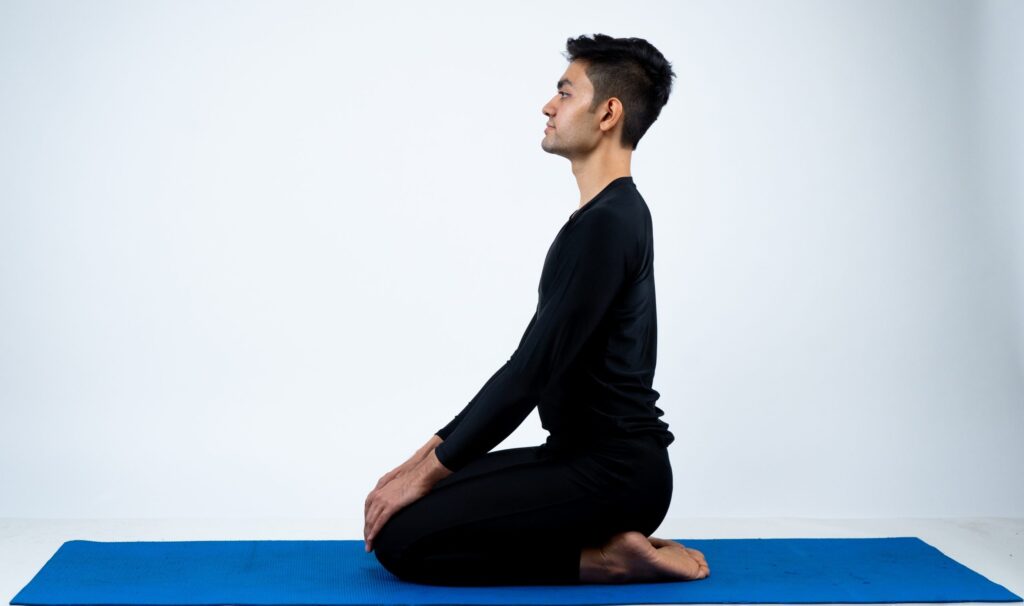
Vajrasana or the Diamond Pose is a kneeling exercise, usually accompanied by breathing exercises. Unlike other yoga asanas, Vajrasana can be practiced after a meal. Hold this pose for at least 5-10 minutes.
Benefits: Vajrasana aids proper digestion and with regular practice, eliminates constipation. It fights stomach disorders and combats acidity. The pose helps your body relax and increases blood circulation. It also improves the flexibility of the lower body and tones your muscles.
Ardha Matsyendrasana (Half Spinal Twist Pose)

Ardha Matsyendrasana or the Half Lord of the Fishes Pose is named after the sage Matsyendranath. It is a half spinal twist with numerous variations. The pose is part of the 12 basic Hatha Yoga asanas. Learning and practising this asana is required, either early in the morning on an empty stomach and clean bowels or 4-6 hours after a meal in the evening. Hold this basic level Hatha Yoga pose for at least 30-60 seconds.
Benefits: Ardha Matsyendrasana relieves stiffness in the back and invigorates the spine, which has a therapeutic effect on the mind besides improving digestion. This pose increases the supply of oxygen to the lungs and detoxifies the internal organs. It also purifies the blood and improves its circulation.
Paschimottanasana (Seated Forward Bend)
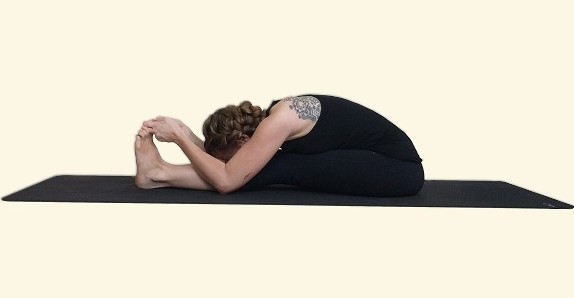
Paschimottanasana or the Seated Forward Bend is a classic Hatha Yoga pose that is very simple to do. This asana gives your body a good stretch and concentrates on the back. Practice the pose in the morning on an empty stomach and clean bowels. If not possible in the morning, do it in the evening after 4-6 hours from your last meal. During practice, hold this basic Hatha Yoga pose for 30-60 seconds.
Benefits: Paschimottanasana relieves mild depression and stress, gives your shoulders a good stretch, and activates your kidneys. Since this is a seated forward fold, it stimulates the spine and calms the mind. The asana reduces headache and fatigue and cures insomnia and high blood pressure. It might even improve mental acuity. It also increases appetite and reduces obesity.
Halasana (Plow Pose)
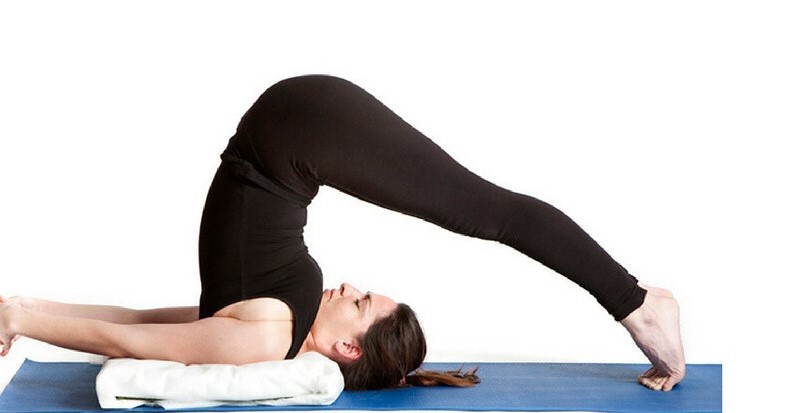
Halasana or the Plow Pose uncovers the hidden capabilities of your body. The plow is a farming instrument used in many Asian countries that churns the soil in preparation for sowing seeds. The pose represents the shape of the plow and is an advanced yoga pose. Practice the pose in the morning on an empty stomach or in the evening with a gap of 4-6 hours from your last meal. Hold the pose for 30-60 seconds during practice.
Benefits: Halasana regulates metabolism and normalizes the blood sugar levels. This pose releases the strain in the back and enhances your posture. It also reduces stress and calms the brain. It gives your shoulder a good stretch and stimulates the underworking thyroid gland.
Sarvangasana (Shoulder Stand)
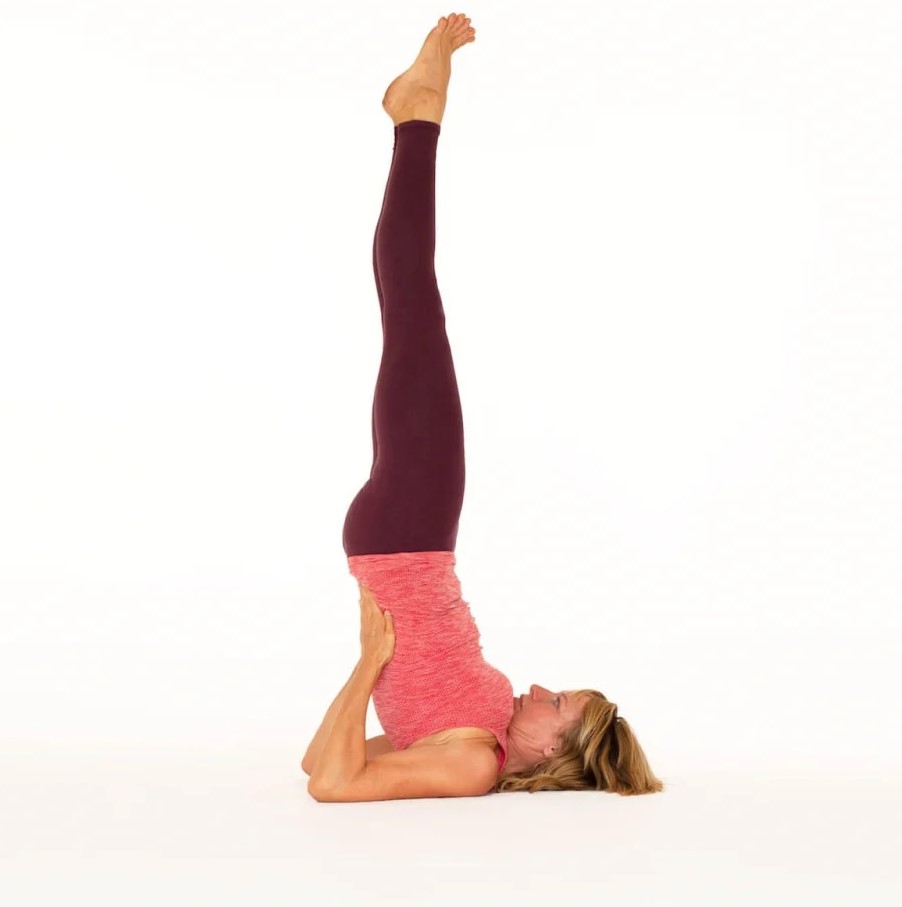
Sarvangasana or Shoulder Stand, is an inverted yoga pose where the entire body is balanced on the shoulders. This pose involves lifting the legs and torso vertically while supporting the back with the hands. It is often referred to as the “queen” of asanas due to its comprehensive engagement of the body.
Benefits: Sarvangasana stimulates the thyroid and parathyroid glands, normalizing their functions. It strengthens the arms and shoulders while keeping the spine flexible. By enhancing blood circulation to the brain, Sarvangasana improves mental clarity and focus. Additionally, it helps relieve constipation, indigestion, and varicose veins. The increased blood flow to the brain nourishes brain cells, promoting better cognitive function and mental sharpness.
Matsyasana (Fish Pose)
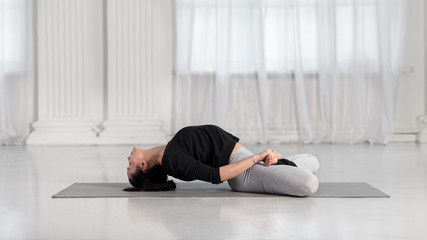
Matsyasana, also known as Fish Pose is a reclining back-bending yoga posture. In this pose, the practitioner lies on their back and arches the chest upward, often with the crown of the head touching the floor. This asana is named after the Sanskrit word “Matsya,” meaning fish, as the body resembles a fish when in the pose.
Benefits: Matsyasana stretches and strengthens the muscles in the chest, back, and neck. It helps improve posture and respiratory function. By enhancing blood flow to the brain, Matsyasana promotes mental clarity and reduces stress. This increased circulation nourishes brain cells, leading to better cognitive function and mental sharpness.
Viparita Karani (Legs Up the Wall Pose)

Viparita Karani, also known as Legs Up the Wall Pose is a gentle inversion where the practitioner lies on their back with legs extended vertically against a wall. This pose is often used for relaxation and restorative purposes.
Benefits: Viparita Karani helps improve circulation, reduce swelling in the legs, and relieve stress. By enhancing blood flow to the brain, it promotes mental clarity and reduces anxiety. This increased circulation nourishes brain cells, leading to better cognitive function and mental sharpness.
Difference from Sarvangasana: Viparita Karani is a more gentle inversion compared to Sarvangasana (Shoulder Stand). In Sarvangasana, the body is balanced on the shoulders with the legs and torso lifted vertically, creating more pressure on the neck and throat. Viparita Karani, on the other hand, involves less strain and is easier on the neck.
Necessity of Both Poses: While both poses offer unique benefits, it is not necessary to practice both. Choosing one based on your comfort and physical condition can be sufficient. Viparita Karani is often recommended for beginners or those seeking a more restorative practice, while Sarvangasana is more advanced and offers a deeper inversion experience.
Mayurasana (Peacock Pose)
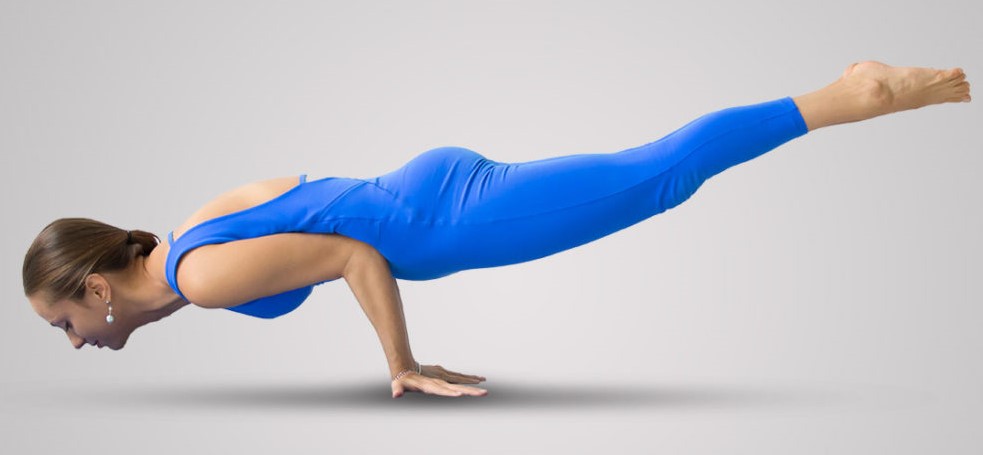
Mayurasana or the Peacock Pose resembles a peacock when it walks around with its feathers down. It seems like a complicated pose to do, but with a little practice, it gets comfortable. It is best to practice this pose in the morning on an empty stomach as your body has the energy generated from digesting the meal of the previous night. Hold this pose for 30-60 seconds during practice.
Benefits: Mayurasana detoxifies the body and keeps fever at bay. It strengthens your abdominal area, energizes your kidneys, and fights diabetes. It makes your spine stronger and improves posture. The asana improves concentration and coordination between the mind and the body, which might improve mental clarity and brain health.
Sirsasana (Headstand)

Sirsasana or the Headstand is the king of all yoga poses. It requires complete inversion of your body and good upper body strength. Sirsasana needs a series of preparatory exercises over a period to do the asana. It is necessary that your stomach is empty and bowels clean to practice this asana. Try to hold the pose for at least 1-5 minutes. For beginners, it is safe to attempt the posture using the support of a wall.
Benefits: Sirsasana instantly calms your body. It stimulates the pituitary gland, strengthens the lungs, improves digestion and cures asthma. It makes the arms and legs stronger and tones the abdominal organs.
Please perform the asanas according to your age and health condition. It is highly recommended to practice these poses initially under the guidance of a certified yoga instructor. Once you have mastered them through regular practice, you may continue on your own.
We recommend the following :
for learning Yoga as teachers and practitioners : Homepage – SRMD Yoga ;
For teachers – Yoga Teacher Training Courses – Jigyasa Yogshala and
for practitioners – Online Yoga Classes | India’s Best Live & Virtual Yoga Sessions | Habuild
Besides that we have Yoga from Art of Living – https://www.artofliving.org ;
Yoga from Isha Foundation of Sadhguruji – Yoga | Isha Foundation | Sadhguru
and many others
Pranayama
Pranayama is a fundamental component of yoga that involves various breathing techniques. By doing Pranayama, one can control the mind through breathing. It helps to detoxify and purify the body and mind, thereby improving physical and mental well-being.
Pranayama can be incorporated with various yoga asanas. Pranayama can be included in daily activities, during physical exercises, or in stressful conditions, which helps in improving the health challenges like insomnia or sleeplessness.
There are three faces in the Pranayama cycle – inhalation through both or one nostril (or Puraka), retention holding the breath inside the body (or Kumbhaka), and exhalation through mouth or nose (or Rechaka).
In pranayama practice, we intentionally inhale, exhale, and hold our breath in different styles and lengths. Lets explore the benefits and some essential pranayamas for enhancing brain power:
- Nadi Shodhan (Alternate Nostril Breathing):
- Activates the parasympathetic nervous system.
- Balances the left and right hemispheres of the brain.
- Kapalbhati (Skull Shining Breath):
- Increases lung capacity.
- Detoxifies the body.
- Bhastrika (Bellows Breathing):
- Boosts gastric fire, improving appetite and digestion.
- Sama Vritti (Square Breathing):
- Slows down the heart rate.
- Increases oxygen supply to the brain.
- Reduces anxiety.
- Dirgha Pranayama (Three-Part Breath):
- Involves inhalation and exhalation in three parts.
- Enhances cognitive function, including working memory and reasoning skills.
- Brahmari Pranayama (Bee Breathing):
Named after the humble bee, it combines the therapeutic power of mindful breathing and sound vibrations. It helps reduce stress and alleviates anxiety.
Vibrations from humming help loosen the mucus and reduce swelling in the nasal passages which may clear the sinuses.
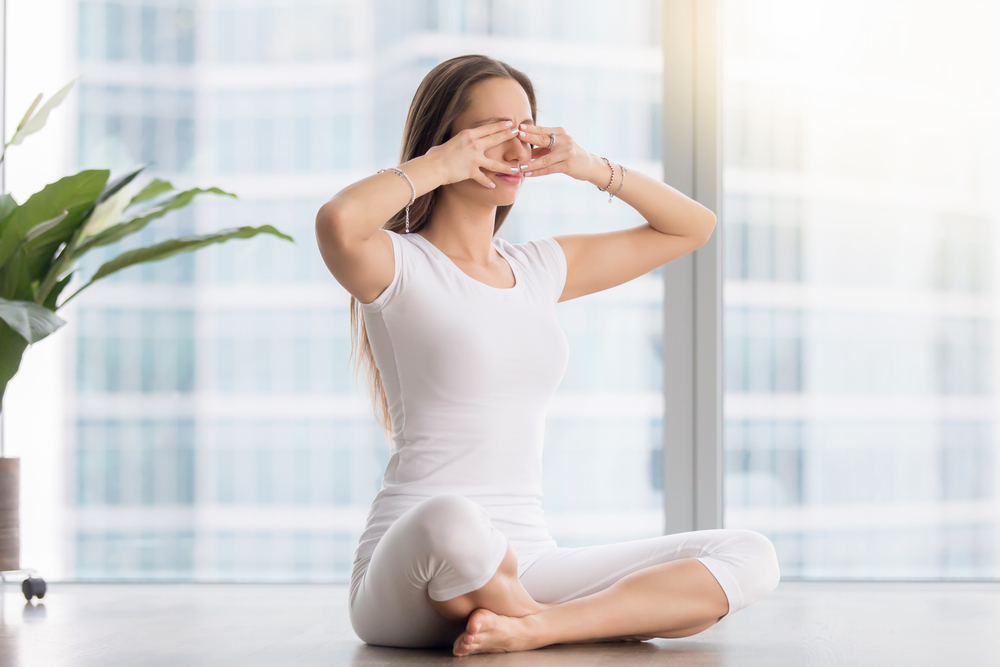
Pranayama strengthens the connection between body and mind, leading to physical, mental, and emotional well-being. It increases oxygen intake, clarity of mind, and inner strength. Remember to sync breath movements with physical postures (asanas) for optimal benefits.
Frequently Asked Questions
Why does the brain degenerate?
The brain weakens mainly because of stress, anxiety, and disease. It can also be a result of ageing.
How often to practice yoga to improve brain power?
Practice yoga every day for about 20 minutes to improve your brain capabilities.
Yoga is a simple and safe way to invigorate your mind and keep it running. Save yourself from a waning memory and a dull mind by trying the asanas mentioned above.
Can yoga cure brain fog?
Since yoga helps to improve concentration and reduce anxiety levels, it would help to reduce the symptoms of brain fog, like lack of focus, sleeplessness, and improve mental agility, etc.
Can yoga regenerate brain cells?
Yoga, especially meditation, helps to improve brain health and improve mindfulness. It encourages the growth of new neurons and help them connect with the existing neurons.
Does pranayama increase brain power?
Pranayama helps to calm your mind, increase concentration, and improve your general well-being. Studies found that pranayama helps to improve cognitive function, reduce anxiety, and improve general well-being and parasympathetic activity.
Key Takeaways
- Regular yoga practice is crucial. Practice in a calm, relaxed setting, and be mindful of your limitations. Pay attention to your body.
- Include particular poses, such as Vrikshasana, Balasana, Setu Bandhasana, Bhujangasana and Adho Mukh Swanasana to enhance focus and concentration.
- Pay attention to deep breathing and maintaining balance while performing the asanas.
- For optimal brain health, adopt a healthy diet and sleeping schedule along with it.
We recommend the following :
for learning Yoga as teachers and practitioners : Homepage – SRMD Yoga ;
For teachers – Yoga Teacher Training Courses – Jigyasa Yogshala and
for practitioners – Online Yoga Classes | India’s Best Live & Virtual Yoga Sessions | Habuild
Besides that we have Yoga from Art of Living – https://www.artofliving.org ;
Yoga from Isha Foundation of Sadhguruji – Yoga | Isha Foundation | Sadhguru
and many others.
Pranayama is part of Yoga and taught by all the above.
